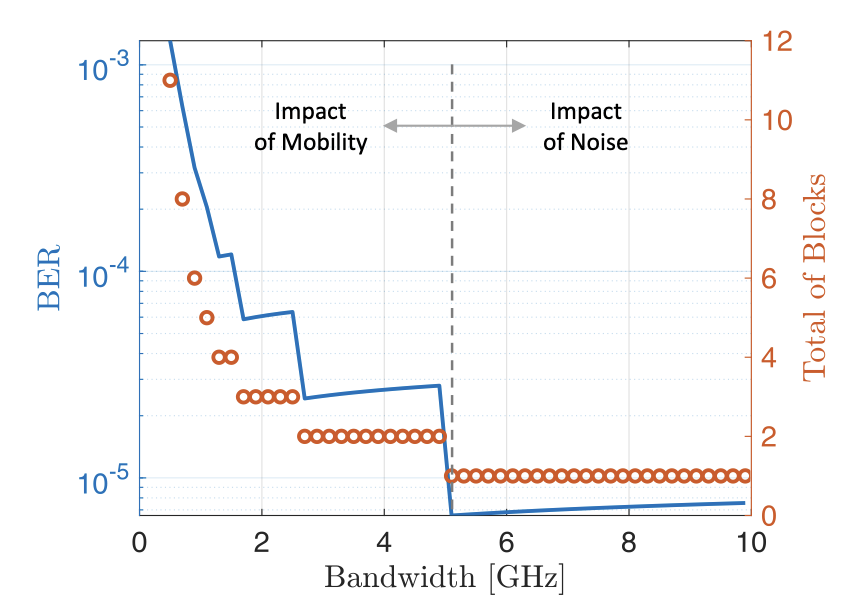Literature Database Entry
xia2022strategies
Tian Xia, "Strategies for Coexistence of 802.11 Wi-Fi and LTE in Context of Low Latency Communications," Master's Thesis, School of Electrical Engineering and Computer Science (EECS), TU Berlin (TUB), September 2022. (Advisor: Anatolij Zubow; Referees: Falko Dressler and Thomas Sikora)
Abstract
With the rapid development of wireless communication technologies, there has been an increasing demand for high throughput and low latency communication. Regrettably, the spectrum resources of the licensed band are struggling to meet the demands of consumers across various industries [1]. In order to overcome this critical severity, researchers began to consider the possibility of offloading part of the LTE traffic to the 5 GHz unlicensed frequency band. Under the guidelines of the 3GPP consortium, several variants of LTE have been introduced ever since, including LTE-U and LAA (Licensed Assisted Access) that can extend the LTE operating spectrum to unlicensed frequency bands through Carrier Aggregation (CA). However, as Wi-Fi transmissions are currently using the 5 GHz unlicensed spectrum, LTE in the same frequency band can degrade the performance of Wi-Fi. One of the reasons is that LTE transmission frames are typically longer than Wi-Fi; this may lead to LTE occupying the channel and unfairly punishing Wi-Fi [2]. Therefore, achieving fair coexistence between LTE and Wi-Fi has become one of the most crucial issues. In this paper, we first introduced the evolution and frame structures of LAA and Wi-Fi with regard to their fundamental differences. Secondly, we explored several imperative prerequisites in the PHY and MAC layer, like Wi-Fi CSMA/CA, LTE-U duty cycle, and LAA Listen Before Talk (LBT). Then LBT Category4, defined in TR36.889 [3], is implemented with Network Simulator 3 (NS-3) to simulate the coexistence scenario of LAA and Wi-Fi. The scenario is simulated under different parameters like Clear Channel Assessment (CCA) thresholds, Transmission Opportunities (TXOP), as well as transport protocols. By analyzing the throughput and latency, parameters are optimized to achieve fair coexistence between LAA and Wi-Fi. Lastly, we addressed a new aspect of the coexistence performance that’s often overlooked. As LAA sends a reservation signal from the end of the LBT to the next unlicensed subframe boundary to secure the channel for LAA transmission, it could be unfair to Wi-Fi since it effectively prevents others from accessing the channel. By applying a reservation signal threshold, we study its impact on throughput, latency, and jitters in simple and complex scenarios. The results show that we can leverage the threshold to make coexistence fairer.
Quick access
Contact
Tian Xia
BibTeX reference
@phdthesis{xia2022strategies,
author = {Xia, Tian},
title = {{Strategies for Coexistence of 802.11 Wi-Fi and LTE in Context of Low Latency Communications}},
advisor = {Zubow, Anatolij},
institution = {School of Electrical Engineering and Computer Science (EECS)},
location = {Berlin, Germany},
month = {9},
referee = {Dressler, Falko and Sikora, Thomas},
school = {TU Berlin (TUB)},
type = {Master's Thesis},
year = {2022},
}
Copyright notice
Links to final or draft versions of papers are presented here to ensure timely dissemination of scholarly and technical work. Copyright and all rights therein are retained by authors or by other copyright holders. All persons copying this information are expected to adhere to the terms and constraints invoked by each author's copyright. In most cases, these works may not be reposted or distributed for commercial purposes without the explicit permission of the copyright holder.
The following applies to all papers listed above that have IEEE copyrights: Personal use of this material is permitted. However, permission to reprint/republish this material for advertising or promotional purposes or for creating new collective works for resale or redistribution to servers or lists, or to reuse any copyrighted component of this work in other works must be obtained from the IEEE.
The following applies to all papers listed above that are in submission to IEEE conference/workshop proceedings or journals: This work has been submitted to the IEEE for possible publication. Copyright may be transferred without notice, after which this version may no longer be accessible.
The following applies to all papers listed above that have ACM copyrights: ACM COPYRIGHT NOTICE. Permission to make digital or hard copies of part or all of this work for personal or classroom use is granted without fee provided that copies are not made or distributed for profit or commercial advantage and that copies bear this notice and the full citation on the first page. Copyrights for components of this work owned by others than ACM must be honored. Abstracting with credit is permitted. To copy otherwise, to republish, to post on servers, or to redistribute to lists, requires prior specific permission and/or a fee. Request permissions from Publications Dept., ACM, Inc., fax +1 (212) 869-0481, or permissions@acm.org.
The following applies to all SpringerLink papers listed above that have Springer Science+Business Media copyrights: The original publication is available at www.springerlink.com.
This page was automatically generated using BibDB and bib2web.

